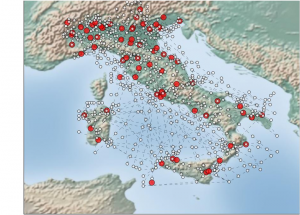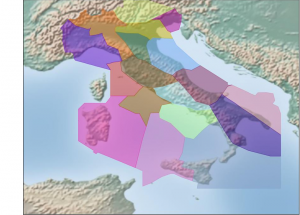A new paper about the emergence of congestion in air traffic has just been published on PloS ONE. The Air Traffic Management system is a highly structured and multi-layered techno-social systems. At each step of the management activity, from the planning phase of the flights to the time when they actually take place, many actors interact in order to provide efficiency and safety. The recent economical crisis and the competition with other fast long-range transportation means slowed down the increase of traffic load, but still it is thought that such increase could bring the system over its current capacity limits, undermining the correct behavior of system. Stakeholders loss of profit, reduced safety standards congestion and increase of CO2 emissions could be some of the results of this unfortunate scenario. New solutions and a better understanding of the functioning of the system will be mandatory to face these future challenges. However there is no possibility to investigate directly the effects of an increased traffic load, since no high traffic data are currently available. Hence the use of computer simulations seems to be a interesting solution for quantifying the disruptive potential of an increase of traffic.


In this paper we model the Air Traffic system at the level of the aircraft trajectories, as a complex dynamical network of flights taking place within an airspace. The main actors are Air Traffic Controllers, whose duty is to modify this network applying redirection in order to solve potential conflicts (i.e. a violation of the minimal safe distance that two aircraft must keep from one another) arising between the trajectories. Driven and validated by the use of historical data about flights in the European Airspace, our model is capable of reproducing the statistics of the current scenario (e.g. traffic load distribution and delay distribution). When the traffic load injected in the system is artificially increased, the model predicts a transition from a phase in which all the conflicts are solved, to a phase in which the high traffic density prevents many conflicts from being solved. We also showed how the current system is usually below the transition point, but the choice of the rerouting strategy is fundamental in order to keep the threshold higher than the current traffic load. Finally we pointed out how our modelling scheme is well suited to study and control future changes in the Air Traffic Control system and the effects of a redesign of the airspace structure.














